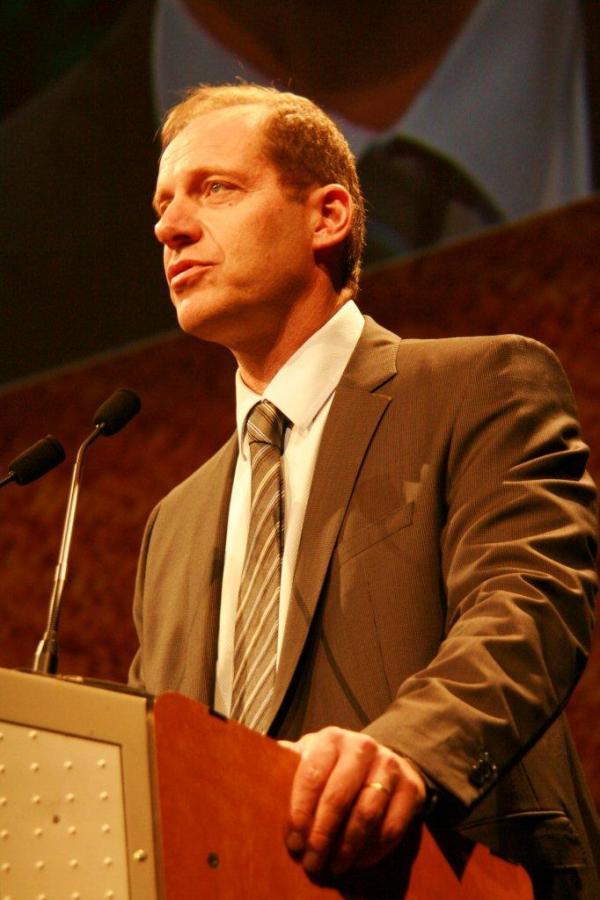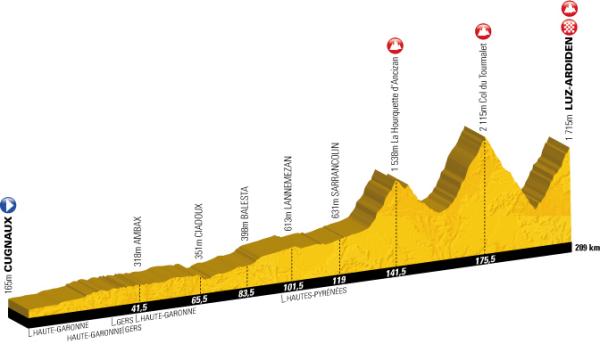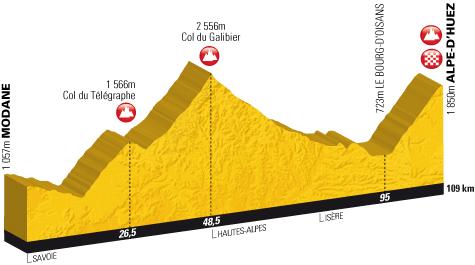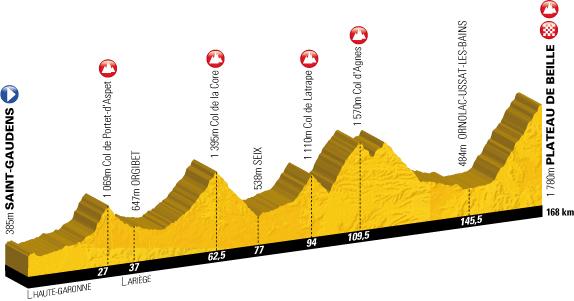2011 Tour de France route reveals Prudhomme's lessons learned
Summit finishes in Pyrenees, Alps ensure fireworks




On first glance the route for the 2011 Tour de France, announced in Paris, France, on Tuesday, appears to adhere closely to what has become the Christian Prudhomme formula.
With three successive stages in the Alps in the final week, including Alpe d’Huez just 48 hours before Paris followed by a time trial on the penultimate day, it looks back-loaded, the intention being to keep the race - and people’s interest - alive until the very end.
Yet a closer inspection reveals this as an overly simplistic interpretation. And it also suggests that Prudhomme, the race director, has learned the lesson of 2009, when the route appeared designed to bring matters to a head on Mont Ventoux.
It was in 2009 that a relatively easy passage through the Pyrenees was followed, in the third week, by three days in the Alps, before, finally, the anticipated denouement on Mont Ventoux, 24 hours before the finish in Paris.
Unfortunately for Prudhomme - and for all of us - it didn’t quite work out like that. With the exception of Lance Armstrong’s escape in the Camargue crosswinds of stage three, the battle for the yellow jersey was barely worthy of being described as a battle.
Too many stages were too straightforward, and the Pyrenees were an irrelevance, with a procession up the Col du Tourmalet that embarrassed Prudhomme and short-changed the thousands of fans by the roadside. In short, the cost of trying to shoehorn all the excitement into the final days was two weeks of boring preamble, with the Ventoux merely confirming rather than deciding the final order.
It would seem, however, that Prudhomme is determined to avoid a repeat. As in 2009, the third week is brutal, but there would appear to be no danger in 2011 of another Pyrenean procession, with two summit finishes, at Luz Ardiden and Plateau de Beille.
The latest race content, interviews, features, reviews and expert buying guides, direct to your inbox!
There are also some loud echoes of 2008 in the 2011 route - some welcome; some less so. No prologue time trial and a first road stage with a sticky little uphill finish? Perfect for a rider like Alejandro Valverde, who will return from his two-year ban in May, 2011 and who won a similar opening stage in Brittany in 2008.
A first summit finish at Super-Besse in the Massif Central? Ideal for an explosive climber like Riccardo Ricco, who won here in 2008.
More palatable is the repeat visit for the finish of stage five to Châteauroux, where Mark Cavendish first tasted victory at the Tour, on his way to four stage wins in 2008.
The inclusion of the Passage du Gois on stage one has been known about for months, but it’s a red herring - unlike in 1999, when it caused carnage, it will come at the beginning rather than the end of the stage.
The return of the team time trial will be welcomed by many, but, at 23km, it’s almost half the distance of the event that featured in 2009. With only one other time trial - a flat individual 41km test around Grenoble on the penultimate day - the time trial specialists may be justified in asking whether Prudhomme has something against them.
But while everyone expects the race to be decided in the Pyrenees or Alps, the Tour’s second weekend, in the Massif Central, could throw up a surprise. The climb to Super-Besse is well known, but the following day’s stage, from Issoire to Saint-Flour, could provide a launch pad for someone.
Coming at a point in the race when a pattern has not been established - when overall contenders and their teams are shadow-boxing, sussing out their own and others’ strengths and weaknesses - the lumpy 208km to Saint Flour is the kind of stage that will whet the appetite of aggressive, have-a-go heroes.
Of course it is always nigh on impossible to predict what stages will conjure up the most exciting, and most decisive, action. Who would have picked stage 12 to Mende as the pick of the 2010 race? (Though many will no doubt disagree with that suggestion.)
Equally, some will suggest that one way of injecting some interest and possible drama into otherwise routine stages would be to have time bonuses - a trick that seems to work at the Giro d’Italia, but which the Tour de France, under Prudhomme, has steadfastly resisted.
Instead, Prudhomme has come up with a classic climbers’ course which draws on most of the best bits of his five previous Tours, from 2006-10.
With no cobbles, no time bonuses, no dirt roads and only two time trials, it’s easy to see where his heart lies - in the mountains.
And in his head, Prudhomme is perhaps imagining that next year’s race be decided by a late showdown on Alpe d’Huez, just as it was the last time the Tour visited, in 2008, when Carlos Sastre escaped to victory.
Richard Moore is a freelance journalist and author. His first book, In Search of Robert Millar (HarperSport), won Best Biography at the 2008 British Sports Book Awards. His second book, Heroes, Villains & Velodromes (HarperSport), was long-listed for the 2008 William Hill Sports Book of the Year. He writes on sport, specialising in cycling, and is a regular contributor to Cyclingnews, the Guardian, skyports.com, the Scotsman and Procycling magazine.
He is also a former racing cyclist who represented Scotland at the 1998 Commonwealth Games and Great Britain at the 1998 Tour de Langkawi
His next book, Slaying the Badger: LeMond, Hinault and the Greatest Ever Tour de France, will be published by Yellow Jersey in May 2011.
Another book, Sky’s the Limit: British Cycling’s Quest to Conquer the Tour de France, will also be published by HarperSport in June 2011.